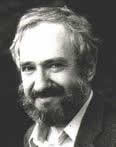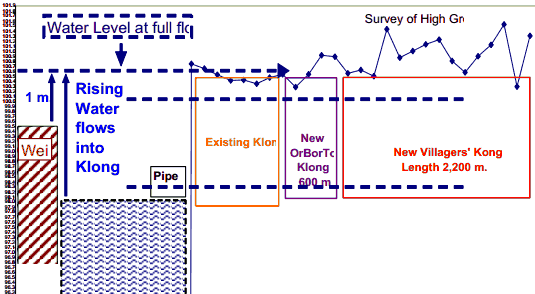Constructionism
What is constructionism? An introduction
Constructionism is the driving methodology at the heart of developing people for EPWF’s main, or flagship programs. Constructionist learning can be applied in all kinds of learning environments, including schools at all levels, universities, non-formal education, rural development, industrial development - even meditation practice.
Constructionism is a model of learning developed in the 1960s by Professor Seymour Papert at The Media Lab, Massachusetts Institute of Technology (MIT). Constructionism was introduced to Thailand by Suksapattana Foundation, where EPWF made the start-up grant.
 |
What is constructionism exactly, and how does it work?
Constructionism replaces the traditional instructionism teaching and training model with a new methodology and vocabulary. Gone are ‘teachers’ who present lessons, which usually have been designed by school authorities, to passive ‘students’ whose role it is to listen and try to remember what they have just heard. Instead, ‘facilitators’ assist ‘learners’ to begin to understand something that is of interest or importance to the learners. : facilitators who facilitated learners learning in a more customized way, learners having a passion for learning their subject of choice, learning in holistic manner combining many disciplines in a just in time way to create something useful and/or meaningful, project style learning over weeks or months, learn from one’s mistake and humbleness in one’s knowledge, learners are also facilitators of other learners.
Professor Papert has explained constructionism this way:
“... knowledge is built by the learner, not supplied by the teacher.... the learner must be engaged in the construction of something external or at least shareable ... a sand castle, a machine, a computer program, a book.”
“You can’t teach people everything they need to know..... The best you can do is position them where they can find out what they need to know when they need to know it.” Seymour Papert
Whereas not against “good traditional instruction” at the appropriate time, there are many other ways to gain knowledge.
The Constructionist way is through learning from an external situation (e.g. seeing a klong delivering water from a dam, drawing a worm’s eye view of the undulating terrain and the klong, and thereby understanding the flow of the water by gravity along a level klong floor.) Chart klong, dig klong, filled klong
There are 3 key elements which interplay with each other in whatever sequence is appropriate to the situation:
- The idea and knowledge internal to ourselves (e.g. of the klong)
- The external drawing on paper (e.g. of the klong) which is shareable and deepens the knowledge (“Learning by Doing” on paper)
- The external construction of the klong which is shareable and gives experiential knowledge which improves the next planning cycle. (Learning by Doing in actual practice)
The " internalization of what is outside" and the "externalization of what is inside" represents a developmental cycle.




Some of the ‘Big Ideas’ of constructionism
Learning by Doing : People learn better when learning is part of doing something they find really interesting. The best learning comes when the learner can use what she learns to make something she really wants – in other words, to carry out a project. Teachers as traditional instructionists are thus replaced by facilitators, or persons who are there to help the learner learn by doing.
The first key factor to learning is the desire to learn.
What each person wants to learn is different. For example, some people want dykes for retaining water while others want dykes for a road.
In academic studies, we learn to pass exams or to obtain pre-requisites for the next course. In Constructionist Learning, we learn knowledge to use. It is accepted that we may need to pre-learn some basic knowledge to lay a foundation for what we need to learn, but that still falls into the need to learn basics so that we can learn something to use. This is “just in time knowledge”.
Data or information is not knowledge, especially data in a domain (field) we do not know. New data must be linked to data or knowledge which we know for the new data to be knowledge. In other words, new knowledge must be related to other knowledge that we know. The knowledge is learned more quickly and more deeply the more there are old knowledge links to the new knowledge. So in order to learn, we need to start from something we know or can learn, and then we move step by step in knowledge (“the next step”). Different people will have different starting points, and “the next step” for each person may be different. Some people may need to learn more slowly in smaller “mini next steps”.
How we learn is also different. A big difference is right brain and left brain learning. Some can think in tables and multi-dimensions, others can only think linearly, others may think instinctively.
Use of Technology: Technology, especially the digital technology of computers and similar devices, lets learners do and make more interesting and complicated things, from which they can learn even more. Knowing digital technology is now as important as knowing how to read and write. Even more important, however, is that computers and the Internet give learners the tools they need to learn about everything else they need to know. With all the world’s mathematical and scientific formulas just a click away on a smart phone, there is no need to memorize most of them in school anymore. Instead, learners need to know how to find the formula they need and then how to apply it to the problem they are trying to solve. Technology thus serves learners on a ‘need to know’ or ‘just in time’ basis for multi-disciplinary learning and problem solving.
Papert’s Constructionism coincides with “The Digital Age” and “The Age of Information Technology”, which as the name implies has great information implications for “Life Long Learning”.
- To be computer illiterate is to be illiterate to the information on the World Wide Web. Constructionism specifically recognizes the opportunities for Constructionist Learning and Facilitation in The Digital Age.
- How can computer technology be used as a building material to analyze and present data as information/wisdom?
- How can computer technology be used to facilitate (distance) learning? The Khan Academy is a prime example. G3 technology closes the distance for information and face to face facilitation.
A great disparity is the unequal access to digital connectivity between urban and rural populations.
A great disparity is the unequal access to digital connectivity between urban and rural populations.